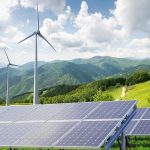Definition of Sustainable Building Practices
Sustainable building practices refer to a variety of construction methods that are environmentally responsible and resource-efficient. These practices aim to reduce energy consumption, minimize waste, and promote a healthier environment. They encompass the design, construction, operation, maintenance, and deconstruction of buildings.
Overview of Environmental Issues
Environmental issues encompass a wide range of problems like climate change, deforestation, pollution, loss of biodiversity, etc. These challenges pose significant threats to life on Earth. Human activities largely contribute to these issues, causing ecological imbalance, health hazards, and substantial economic losses, especially in densely populated areas like the office building central. It requires immediate global attention and mitigating action.
Importance of Sustainable Building Practices
- Contribution to mitigating climate change
Active contributions to mitigating climate change include reducing greenhouse gas emissions, promoting renewable energy, adopting sustainable farming methods, and supporting reforestation efforts. Each individual can contribute by living sustainably, reducing waste, reusing resources, and advocating for stronger climate policies.
- Protection of natural resources
The protection of natural resources is crucial to preserving the earth’s ecological balance. This includes activities like sustainable usage, proper waste disposal, recycling, and legal enforcement against exploitation. Our survival and prosperity highly depend on the health of our planet’s natural resources. Hence, it is our responsibility to protect them.
Energy Efficiency
- Reduction in energy usage
Reduction in energy usage involves adopting techniques that minimize energy consumption, leading to lower electricity bills and net energy usage. Employing energy-efficient appliances, reducing water usage, and prioritizing renewable energy resources are effective ways to accomplish this. It also aids in mitigating environmental damage.
- Application of renewable energy solutions
The application of renewable energy solutions has a profound impact on environmental sustainability. This involves harnessing natural resources like wind, solar, and thermal energy. Adoption of these solutions reduces greenhouse gas emissions, promotes energy independence, and fosters economic growth, making it a valuable long-term strategy.
Water Efficiency
- Decrease in water wastage
The decrease in water wastage is a pressing concern today. Providing sustainable solutions can mitigate the impact of water scarcity. By incorporating efficient water management practices, promoting conservation, and utilizing technology, we can significantly reduce waste and help preserve our planet’s precious water resources.
- Implementation of water recycling systems
Implementation of water recycling systems is a crucial step towards sustainable water management. These systems collect and treat wastewater, enabling its reuse for irrigation, industrial processes, and even domestic purposes. The technology holds significant potential to reduce freshwater consumption and aquatic pollution.
Preservation of Ecosystem
- Prevention of landscape destruction
Prevention of landscape destruction is crucial for maintaining biodiversity and ecological balance. It involves implementing sustainable land management practices, limiting deforestation, controlling urban sprawl and encouraging reforestation. Similarly, creating public awareness about the importance of preserving the natural landscape can significantly contribute to its protection.
- Protection of wildlife and vegetation
The protection of wildlife and vegetation is paramount for maintaining biodiversity. It ensures the survival of various species and preserves natural habitats. Activities like deforestation and poaching threaten these ecosystems, hence enforcing stronger conservation laws is crucial. This contributes to a balanced environment and benefits mankind’s survival.
Increased lifespan of buildings
- Use of durable materials
The use of durable materials is essential in construction and manufacturing industries. These robust substances, like steel, concrete, or hardwood, ensure the longevity and resilience of structures and goods. Opting for durable materials translates to lower maintenance costs, longer life spans, and overall sustainability.
- Reduction in maintenance and replacement needs
Reduction in maintenance and replacement needs can significantly cut down costs and increase efficiency. Regular checks, preventive measures, and using high-quality materials are keys to achieving this. This not only aids in increasing product lifespan but also enhances user satisfaction and trust in the long run.
Economic benefits of sustainable building
- Long-term savings
Long-term savings are funds that you set aside for the future. This plan involves disciplined, regular contributions over time, often contributed towards retirement, a down payment for a house or future college expenses. Using high-interest savings accounts or investment portfolios can amplify these savings considerably.
- Increased property value
Increased property value is crucial for homeowners as it can bring higher returns when they decide to sell. This can be achieved through various ways such as home improvement, the rise in local market demand, or developments in the surrounding neighbourhood providing amenities and convenience.
Case Studies of Sustainable Buildings
- Success stories around the world
Success stories around the world motivate and inspire millions. From the rags-to-riches tale of a street vendor who becomes a billionaire, to a single mom in Asia who started a successful tech company, to an African child prodigy solving complex mathematical equations, their achievements spark imagination globally.
- Lessons learned
Lessons learned are the nuggets of wisdom gained from experiences, both pleasant and unpleasant. They shape our perspectives, guide our decisions, and influence our actions. They’re invaluable tools for growth, stimulating personal and professional development, and nurturing our evolution as individuals.

Future of Sustainable Building Practices
- Innovation and technological advancements
Innovation and technological advancements play a vital role in societal growth and development. Achievements in technology transform our lifestyles, communication methods, and environments. They propel industries forward, enhance efficiency, open inspiring possibilities, and aid in solving complex problems. Therefore, they represent the heart of modernization and progress.
- Policies and regulations
Policies and regulations are vital for a structured and organized society. They provide necessary guidelines and rules in different sectors such as healthcare, education, finance, etc. These policies ensure efficient functioning, promote fairness, prevent corruption, and maintain a balance in societal activities.






